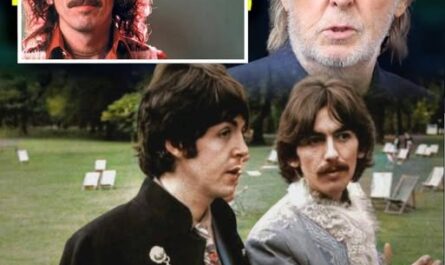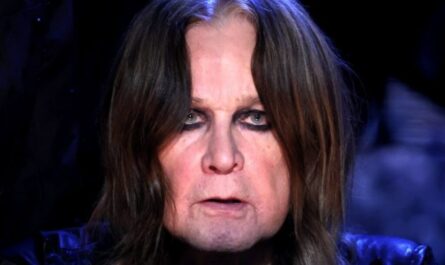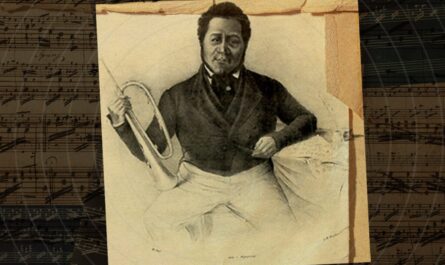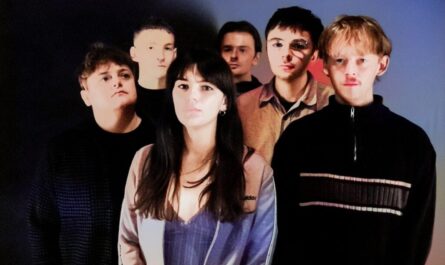Sure, they’ve had their ups and downs trying to become rock legends, but after Definitely Maybe blows up, they’ve come to Rockfield Studios with one mission: to make the best follow-up they can. And while the carnage was about to run rampant, Nick Brine was there to oversee both the tragic and transcendent moments.
Then again, Brine had already been used to the storied history of Rockfield Studios before he even started working there. Having been given the keys after his first interview at only 16 years old, he had a piece of history waiting for him whenever he came to work. But for him, it may have been just another Tuesday most of the time.
You see, when you’re already close to Rockfield Studios, you get to know the clientele pretty quickly, with Brine saying, “You see all the bands walking around the town when you’re growing up. You might bump into Robert Plant. My dad had the local taxi firm, so he’d pick Robert Plant and take him home, so he was used to all of these rock stars.”
So, before most of us are done with our final exams, he was already a seasoned pro working with The Stone Roses before even meeting the cheeky lads from Manchester.

But for all of the storied history around all records of this magnitude, their turnaround rate was astonishing. They might have carried themselves as the kind of insane rock stars that wanted to party more than anyone, but tracking 15 songs in 15 days isn’t the work of people who don’t have a plan. Noel was laser-focused, and even if tunes like ‘Some Might Say’ were already in the can, there was a lot of work to be done before he had a masterpiece.
When talking about the actual recording, Brine remembered all the layers that needed to be put on the record as well. Noel may have prided himself on keeping Oasis as a truly raw band when they first started mixing Definitely Maybe, but even with that brickwalling technique Owen Morris put in, there was a lot more work to be done once they worked on everything from the segues of waves lapping on a beach to the birds singing at the start of the record before ‘Hello’ kicks in.
Every critic would have called it self-indulgent, but Brine knew that if you took out so much as one guitar part, the entire thing would collapse. When working with a band trying to get those Oasis guitar sound, Brine knew they would be lost in the woods without all the layers, saying, “I did a session for a studio in Brighton and the guitarist came in thinking he was gonna nail the parts and then I was like, ‘No, no, that doesn’t work unless you have this part.’ It’s much more obvious on Be Here Now, but there are lots of layers on What’s the Story.”
And that kind of production is half of what makes the record shatter anyone’s illusions of a sophomore slump. Noel already had enough tunes to last them all the way through to the next record, but even when they were beginning work at Rockfield, Noel was still testing out the basics of tracks like ‘All Around the World’ before saving it until he had the orchestra to work with.
While Brine would have had a classic front row seat to hear when tracks like ‘Wonderwall’ and ‘Don’t Look Back In Anger’ were taking shape, it’s not like he was safe from the bad times as well. It took a lot of tolerance to rein in Noel and Liam in those days, and when the Great Battle of 1994 kicked off when Liam brought some “friends” back from the pub, Brine was there to oversee everything.
In traditional Oasis fashion, it was ‘back to work’ in no time, but it was far from the prettiest sight afterwards, with Brine recalling, “This massive high becomes this massive low that this body of work that’s maybe going to change the course of music is never going to see the light of day now. Owen was completely oblivious to it. He wakes up to all this carnage. Smashed windows, smashed instruments, and a smashed up house. I think, deep down, it was like, ‘This has happened before. They’ll be fine.’”
Even if it took the Gallaghers a little while to cool down, two brothers isn’t the key to making a great album. Oasis were still a band, and while Alan White may have been the new boy at the time when he signed on for those sessions at Rockfield, Brine knew that the foundation of the band’s sound at the time was always in Bonehead.
While he credited ‘Champagne Supernova’ as the song that “cements Liam’s place in rock and roll history”, he knew that the build of the tune wouldn’t have been half of what it was were it not for Bonehead, saying, “Bonehead’s doing all those rhythm guitars that you hear. There’s Noel on bass on a couple of tracks as well. But Bonehead’s got that style that needs [to be] in there, and Noel would layer with different sounds. And obviously with Be Here Now that went to a whole new level.”
For a mix that had so many layers, though, it never loses its dynamics, either. Sure, there are tunes like ‘Morning Glory’ that are audio juggernauts when you listen to them, but the beauty of the album is how well-paced the downtempo tunes are as well, like the Pink Floyd-esque slide guitar on ‘Cast No Shadow’ or only needing a few basic elements to turn ‘Wonderwall’ into the cultural touchstone it is today.
It was a hectic few weeks, no doubt, but when looking at the final version, they had crafted one of the best tracklists anyone has ever opened with. The whole thing could have practically been labelled as a greatest hits record and no one would have batted an eye, but for Brine, there was still more work to be done.

Be Here Now was a few years around the corner, and in between working with other artists like Teenage FanClub and The Verve, it was a much different ball game when working with Oasis on their magnum opus. His first outing with them was Oasis on the rise, and when they went to Abbey Road Studios for the third record, Brine said that they were more worried about the tapes getting stolen every day they were working.
Even if Be Here Now was given the public lambasting it got, the world kept turning for Brine, and his work with everyone from Robbie Williams to The Darkness to Arctic Monkeys cemented his place in rock and roll history as well. And while there are many acts who have tried to capture the same spirit as Oasis since then, Brine remembered that Arctic Monkeys were among the few that came the closest when seeing them in the flesh.
The Verve had been seen as equals compared to Oasis, but as far as Brine was concerned, that rock and roll magic was alive and well when he first met Arctic Monkeys, saying, “When they came in, I was doing the pre-production for Humbug, which they would give to Josh Homme to produce. I set them up in a circle, and when they started playing, immediately it sounded like Arctic Monkeys. It’s just fantastic. No one else sounds like them and it’s just immediate.”
Others might manage to equal what Oasis did, but there’s a reason why no one has managed to surpass what they had done. They were ready to make albums for the ages at this point in their career, and while it can get a bit grating listening to some of their more overplayed material, What’s the Story Morning Glory is proof that overplaying exists for a reason.
People need to remember why they felt so alive back in their heyday, and in those few days with the band, Brine is both proud to be their partner in crime alongside Morris as they worked their way into rock and roll folklore. None of them planned to have one of the most successful records in British history, but albums only achieve that when the rest of the world lets the album into their hearts.





